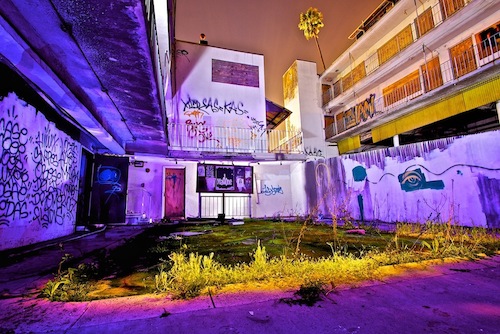
Photo credit: Sam Bendall
The concept of “photoetry,” the artistic combination of photography and poetry, was born eight years ago when two college students attended an art gallery downtown.
Professor and poet Hiram Sims, a USC undergraduate at the time, was inspired to have his own work hung for others to admire after seeing what another local artist could accomplish.
Nearly a decade later, Sims has revived the concept in his recent book, Photoetry: Poetry and Photography in South Central LA.
“I felt that with my poetry I could express the humanity of my community,” Sims said. “I often describe photoetry as a testament to the humanity of my community because these human experiences are what I am expressing in the books.”
Sims teamed up with local photographers Sam Bendall, Adam Tillman-Young, Ammer Espy, Kim Soria and Charisse Sims, his wife and biggest supporter of his photoetry idea.
Sims gave the photographers 50 of his best poems and they chose which one evoked an image in their mind that they then tried to recreate with photography. The process worked the other way around as well. Sims wrote poetry as certain photographs inspired him. According to Sims, poetry and photography are a sensible pair.
“The chief job of a poet is to create imagery in the mind of the reader or express the imagery we see in our own mind,” he said. “We are literally taking a picture with words of a thought or a place or a point in time.”
Sims describes the book as a clash between four major influences in his life which all collided in a serendipitous way. His trip to the art gallery and meeting the photographers were just half of the puzzle.
The third element was Sims’ inspiration in Phyllis Wheatley, a slave who won her freedom through her poetry and to whom the first poem in the collection is dedicated. From Wheatley’s story, Sims learned that powerful words could humanize a person or a community.
The final and perhaps most important influence was his community-South Central Los Angeles. Although Sims lived in various parts of Los Angeles growing up because of his father’s job, he always went to school in South L.A. and graduated from James A. Foshay Learning Center. Ultimately he chose to settle in South L.A. near Crenshaw and Manchester where he currently lives with his wife and daughter.
Despite the negativity that sometimes surrounds the area, Sims feels a sense of pride living there that he often notices in community members as well.
“I choose to live there and so do these other people,” he said. “Even if they don’t like what happens there all the time.”
This sense of pride in the neighborhood is a main theme that Sims hopes readers learn from the book.
This does not mean Sims paints an overly idealistic image of the community. Sims challenges ideas of race, violence and religion in the community in poems such as “The Wrong Red Shirt,” “god Hates Me,” and “I Feel the Love (Ode to the LAPD).”
Balancing these tensions in his work was not always easy. Sims knew at the outset that he did not want to portray the same image of South L.A. often portrayed in movies.
“I just enjoy that my book is a part of the literary legacy of the community,” Sims said. “That is what shocks me to this day: that the book is now a part of the history of the neighborhood.”
You can purchase the book from Figueroa Press here.
Listen to Hiram Sims read one of his favorite poems “The University of South Central- My First White Friend, His First Black Friend, Freshman Year.”















Speak Your Mind